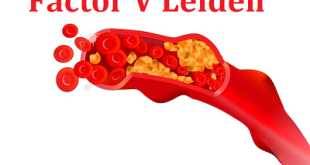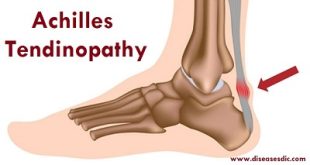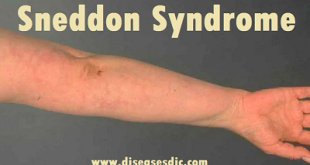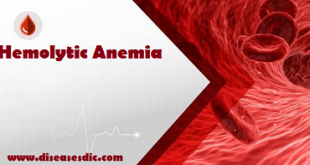Definition
Aplastic anemia (AA) can be inherited or acquired. Inherited forms usually present during the first decade of life, but in rare cases may manifest in adulthood. It is a rare blood disorder in which it occurs when a child’s bone marrow produces too few of the three types of blood cells: red cells that carry oxygen, white cells that fight infection and platelets that prevent bleeding. This occurs because the child’s bone marrow fails to produce enough stem cells, the basic cells that give rise to the three blood cell types.
The low number of red cells causes a drop in hemoglobin, the protein in red blood cells that carries oxygen to tissues of the body. A low number of white cells makes a child very susceptible to infections. And a low number of platelets causes bruising and bleeding because the blood will not clot normally.
What are the different types of aplastic anemia?
Aplastic anemia can be acquired (you develop the condition) or inherited (you are born with the condition).
- Acquired aplastic anemia is common in adults. Possible causes for the condition include immune system triggers such as HIV, toxic chemicals, certain medications, and chemotherapy or radiation for cancer treatment.
- Inherited aplastic anemia is most common in young adults and children. It is caused by gene defects and suggests a higher likelihood of leukemia and other cancers.
In addition to aplastic anemia, other common types of blood cancers include:
- Leukemia
- Lymphoma
- Myeloma
- Germ cell tumors
Epidemiology
Aplastic anemia (AA) is a rare life-threatening disease. The incidence and median age at diagnosis, which varies according to geography, ranges from 1.5 to about seven cases per million inhabitants/year, and from 25–60 years, respectively.
Pathophysiology
Two interrelated explanations exist for aplastic anemia: extrinsic immune-mediated suppression of hematopoietic stem cells and intrinsic abnormality of marrow progenitors.
Damaged hematopoietic stem cells mature into self-reactive T-helper cells (T1) that release cytokines interferon-? (IFN?) and tumor necrosis factor (TNF) to propagate a cytotoxic cascade to kill and suppress other hematopoietic stem cells. The exact antigens T1 cells target are unclear, but one appears to be the glucose phosphate inositol (GPI)-linked protein on cell membranes (the mechanism behind pancytopenia in PNH). Also, the genes for apoptosis and death pathways are upregulated. Moreover, immunosuppressive therapy targeting T-cells leads to a response in two-thirds of patients with idiopathic aplastic anemia, and patients with graft-versus-host disease develop aplasia in the setting of healthy bone marrow progenitors.
In the second theory, stem cells with inherent defects lose the capacity to differentiate and proliferative. Their inability to dedifferentiate can lead to clonal evolution into hematologic neoplasms, for example, myelodysplastic syndrome. This is common in patients with Fanconi anemia. Partial defects in telomeres, the component of DNA intertwined with cell division, lead to premature hematopoietic stem cell exhaustion and marrow aplasia as well. Shortened telomeres are present in cells of half the patients with aplastic anemia.
Classification
Classification of aplastic anemia (two of three criteria must be met)
| Non-severe AA | Severe AA | Very severe AA | |
| Neutrophil count | < 1.0 G/L | < 0.5 G/L | < 0.2 G/L |
| Platelets | < 50 G/L | < 20 G/L | < 20 G/L |
| Reticulocyte count | < 20 G/L | < 20 G/L | < 20 G/L |
To diagnose very severe aplastic anemia, < 0.2 G/L neutrophil granulocytes and hypocellular bone marrow must be present (cellularity < 25% or 25-50% with < 30% hematopoietic cells in the bone marrow), whereas evidence of hypocellular bone marrow is sufficient to diagnose non-severe aplastic anemia.
Causes of aplastic anemia
In many cases, an underlying cause is not found (classified as idiopathic), but an autoimmune destruction of stem cells is suspected. In some cases, inherited genetic mutations are found to cause aplastic anemia. Other causes include:
- Radiation
- Toxins
- Medications
- Viral infections
- Clonal abnormalities
Aplastic anemia symptoms
The following are the most common symptoms of aplastic anemia. However, each child may experience symptoms differently. Symptoms may include:
- Headache
- Dizziness
- Nausea
- Shortness of breath
- Bruising
- Lack of energy or tiring easily (fatigue)
- Abnormal paleness or lack of color of the skin
- Blood in stool
- Nosebleeds
- Bleeding gums
- Fevers
- Sinus tenderness
- Enlarged liver or spleen
- Oral thrush (white patches on a red, moist, swollen surface, occurring anywhere in the mouth)
The symptoms of may resemble other blood disorders or medical problems. Always consult your child’s doctor for a diagnosis.
Bruising on the skin
Risk factors
Factors that may increase your chances of having aplastic anemia include:
- Exposure to certain environmental toxins such as those found in gasoline, paint, oil and coal emissions, and industrial solvents
- High dose radiation and chemotherapy treatments
- Certain viruses
- Certain medications such as antibiotics, some illegal drugs, and medications used to treat rheumatoid arthritis
- Bone marrow diseases
- Pregnancy
Complications of aplastic anemia
With correct treatment, the risk of complications will be reduced for children with aplastic anemia.
Complications of aplastic anemia include:
- Medicine used to treat anemia may cause side effects
- Problems with growth and development
- Cancers
- Heart failure
- Uncontrolled bleeding
- Severe infections
Aplastic anemia diagnosis
The first clue of a bone marrow disorder is a blood test that shows abnormally low levels of blood cells. To learn more, additional tests that may include:
Bone marrow biopsy: We take a bone marrow sample and hematopathologists, doctors who diagnose blood disorders, study it under a microscope.
Peripheral blood smear: If we suspect MDS, we use a high-resolution microscope to evaluate the size and shape of abnormal blood cells.
Molecular testing: We use sophisticated technologies (next-generation sequencing) to determine the chemical makeup of abnormal cells. This information helps us tailor treatment plans.
PNH testing: We use flow cytometry to identify copies of abnormal stem cells (PNH clones) and determine how active they are. Flow cytometry uses laser beams to help measure the characteristics of abnormal cells.
Treatment for aplastic anemia
Treatment options for aplastic anaemia are directed by the underlying cause and depend on many factors, such as age, general health and symptoms. The treatment includes
Immunosuppressants: For individuals unable to undergo a bone marrow transplant or whose autoimmune condition is the cause of their aplastic anaemia, these treatments can alter or suppress the immune system (immunosuppressants).
Bone marrow stimulants: When blood cell counts are low, bone marrow stimulating drugs are given to boost the body’s production of blood cells. These stimulants have serious risks and side effects. Additionally, it should be noted that these medications are not used to treat all cases of “low counts”.
Blood transfusion: A blood transfusion is preferred to replace blood and components that may be too low. Transfusions cannot treat aplastic anaemia, but they can easily manage symptoms like bruising or fatigue.
Stem cell transplant: A bone marrow or stem cell transplant can cure severe aplastic anaemia. Stem cell transplants replace damaged stem cells with healthy ones.
Medicines: Aplastic anaemia weakens immunity, which makes a person prone to infections. For a severe aplastic anaemia patient, the doctor might prescribe antibiotics or antiviral medications to keep infections away.
How to prevent aplastic anemia?
There is no known way to prevent idiopathic aplastic anemia.
- Unlike other forms of anemia, it can’t be prevented by using iron supplements.
- Avoiding exposure to insecticides, herbicides, organic solvents, paint removers and other toxic chemicals might lower your risk of the disease.
- Pay attention to your body and talk to your doctor if you develop anemia symptoms. Prompt treatment can help keep you feeling well.
 Diseases Treatments Dictionary This is complete solution to read all diseases treatments Which covers Prevention, Causes, Symptoms, Medical Terms, Drugs, Prescription, Natural Remedies with cures and Treatments. Most of the common diseases were listed in names, split with categories.
Diseases Treatments Dictionary This is complete solution to read all diseases treatments Which covers Prevention, Causes, Symptoms, Medical Terms, Drugs, Prescription, Natural Remedies with cures and Treatments. Most of the common diseases were listed in names, split with categories.







